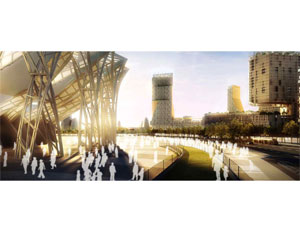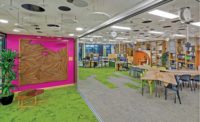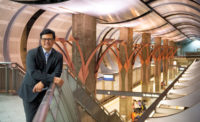Explaining biomimicry—much less getting people to buy into the concept, framework or philosophy—can be difficult.
On the one hand, it is intuitive and simplistic. On the other, it is radical compared to current design and building practices, and it has no objective standards of measurement, which makes its lofty, sustainability goals seem unattainable.

The simple, core principle of biomimicry, a term popularized in science writer Janine Benyus’ 1997 book of the same name, is that in order to be more sustainable, designers should mimic nature. But more than a decade later, many in the industry are still unfamiliar with the philosophy, much less its practical applications for construction.
Even American Institute of Architects’ chapters in the Mountain States region admitted to having only a peripheral understanding of biomimicry (called biomimetics in England and bioniks in Germany), and none could offer an example of biomimicry actually being applied to projects in Wyoming, Utah, Montana, Colorado or Idaho.
New Mindset
In 1998, Benyus and partner Dayna Baumeister formed the Biomimicry Guild in Helena, Mont., as a consultancy that claims to be “the only innovation company in the world to use a deep knowledge of biological adaptations to help designers, engineers, architects and business leaders solve design and engineering challenges sustainably.”
The guild boasts high-profile clients such as General Mills, NASA, Kraft, Proctor and Gamble, Gensler Architects and more (biomimicryguild.com, biomimicryinstitute.org) but won’t cite specific examples of a project in design or construction that exhibits the principles of biomimicry.
“We don’t do the design,” says Patti Borneman, symbiotic communications catalyst for the guild. “We provide tools for inspiration, for brainstorming. Fundamentally, it’s a mindset about committing oneself to look at nature and become more sustainable.”
Don’t expect to drive to a nearby city to see construction of a completely biomimetic building any time in the near future. Such a structure would be completely made of locally available materials and energy sources. There would be no toxins in the building or any of the building materials, and the structure would be inspired by the local biology, Baumeister says.
For example, in hurricane-ravaged south Louisiana, the guild is seeking inspiration from live oak trees, which...




Post a comment to this article
Report Abusive Comment